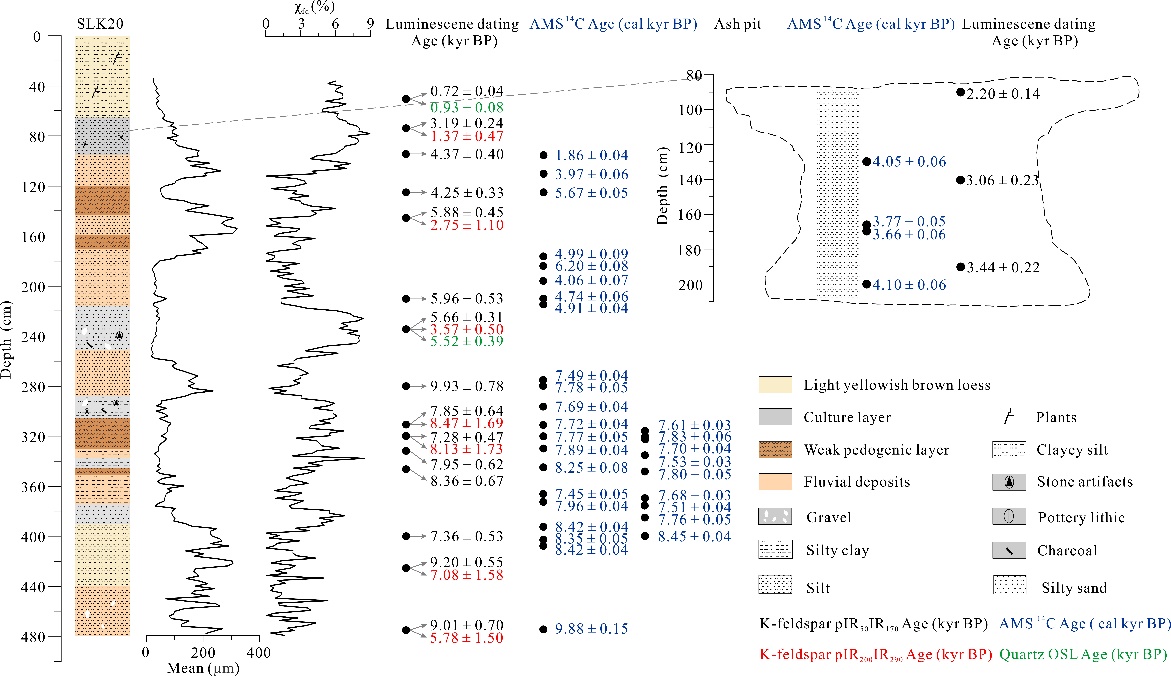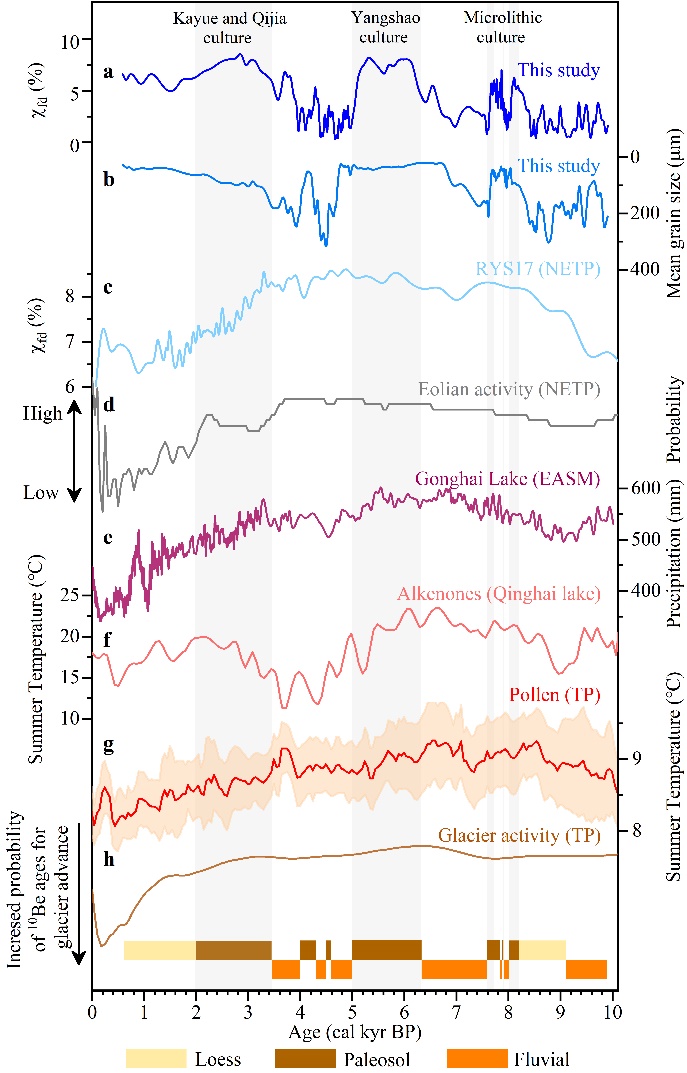Chronology is an important prerequisite for revealing the evolution process of salt lake, understanding the response mechanism of lake ecosystem to climate change, and accurately revealing the law of salt formation and mineralization in salt lake. Due to the complexity of salt lake sediments on the Qinghai-Tibet Plateau, there is a bottleneck in the study of complex chronology related to salt lake evolution. Luminescence dating is now widely applied to the dating of late Quaternary sediments, but its application in the complex sediments of Qinghai-Tibet Plateau is limited due to problems of poorly bleached and signal dimming. The newly developed single-grain luminescence dating method and calculation model are expected to solve the bottleneck problem of the dating of complex samples such as salt lake sediments on the Qinghai-Tibet Plateau. It is one of the current research hotspots in the field of luminescence dating to improve the dating technique for detecting poorly bleached sediments and determine their deposition ages reliably.
In this study, AMS 14C dating, single-grain quartz OSL dating, and single-grain K-feldspar pIRIR dating using pIR50IR170and pIR200IR290 signals were applied to the fluvial-paleosol sequence at the archaeology site Shalongka (SLK20) in the upper Yellow River valley on the northeastern Tibetan Plateau, where Paleolithic, Neolithic, and Bronze Age cultural layers were found. Utilizing luminescence characteristics analysis and a comparison of quartz OSL ages, K-feldspar pIRIR ages, and charcoal 14C ages, the reliability of single-grain quartz OSL and K-feldspar pIRIR ages was tested. Our results indicate that single-grain K-feldspar pIR50IR170 dating with the minimum age model (MAM) can be used to date Holocene fluvial deposit that have been poorly bleached. Based on the age-depth model, proxy data of the SLK20 grain size and magnetic susceptibility demonstrate that Yellow River overbank flooding increased during the periods 9.9–9.1, ~8.0, 7.6–6.3, 5.0–3.4 kyr BP; during the intervals between these periods, Yellow River overbank decreased and paleosols developed. Human occupations, as indicated by the appearance of cultural layers at the SLK20 site during the ~8.1, ~7.8, 6.3–5.0 and 3.4–2.0 kyr BP periods, occurred when paleosol developed. The variation in East Asian summer monsoon (EASM) intensities caused a moist and warm mid-Holocene climate at the SLK20 site, which was conducive to human settlement. Flood events caused by EASM precipitation changes during the mid-Holocene significantly influenced human settlement at the SLK20 site. During the middle to late Holocene, as EASM decreased in the region, the improvement of subsistence strategies likely dominated human settlement on the northeastern Tibetan Plateau.
These findings were recently published in the Journal of Quaternary Science Reviews under the title of Single-grain K-feldspar pIRIR dating of the Shalongka archeological site revealed the relationship between monsoon, overbank flooding, and human occupation during the Holocene on the northeastern Tibetan Plateau. Dr. Wang Yixuan from Qinghai Institute of Salt Lake is the first author, Professor Li Guoqiang from Lanzhou University is the corresponding author, and Dr. Wang Xiaoyan of Lanzhou University is the co-corresponding author. Professor Hou Guangliang from Qinghai Normal University, Associate Professor Chen Chunzhu and Associate Professor Zhao Wenwei from Nantong University also participated in this research. This work was supported by Instrument and Equipment Function Development Technology Innovation Project of Chinese Academy of Sciences (Grant no. lz2023g103), Natural Science Foundation of Qinghai Province (Grant no. 2021-ZJ-981Q), the Fundamental Research Funds for the Central Universities (lzujbky-2021-ey22), and the National Natural Science Foundation of China (Grant No. 42071101).
Link address for full text: https://doi.org/10.1016/j.quascirev.2022.107848

Fig. 1. Lithology, single-grain quartz OSL ages, K-feldspar pIRIR ages, and radiocarbon ages for samples from the SLK20 section.

Fig. 2. (a) and (b) are the χfd and mean grain size (μm) of samples from the SLK20 section, respectively. (c) is the χfd variation of the loess-paleosol section RYS17 from the NE Tibetan Plateau (TP) (Li et al., 2020b). (d) is the age probability density for eolian sediments on the NETP (Chen et al., 2020). (e) is pollen-based reconstruction of Holocene precipitation from Lake Gonghai in the central loess plateau (Chen et al., 2015b). (f) and (g) represent the Holocene summer temperature change reconstructed from alkenones from Lake Qinghai (Hou et al., 2016) and that reconstructed by a synthesis of TP pollen records (Chen et al., 2020), respectively. (h) is the probability density of glacial moraine ages on the TP (Chen et al., 2020). Gray vertical bands indicate cultural layering periods.